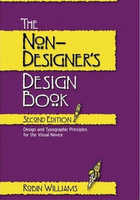If you're still not convinced it's worth giving your church publications a makeover, consider this quote from David Whitbread's Design Manual. "Print identity is only part of an organisations image - but it's probably the easiest part to control. Many organisations appear to not understand how their visual identity works for them, or in many cases, against them. The print identity affects not only outsiders' views of an organisation,
but also insiders'. It can help the organisation establish a perception of itself as worthwhile, trustworthy, professional, forward thinking, up-to-date... alternatively, it can look fly-by-night, cheap, tasteless or muddled." Naturally, a print-identity makeover won't help a bit if your church really
is fly-by-night, cheap, tasteless or muddled. But if you're looking for a way to symbolise the fact that your church is going forward with confidence - much to the current members as to newcomers - you could do worse than professionalise your print-identity.
How? It's simple. Get rid of multiple fonts! Yeah, I know - fonts are fun. I love 'em. But the trick to professionalising your look is to limit your typeface selection to a maximum of two carefully selected fonts. Look around. Phone companies like Telstra and '3'have easily identifiable corporate fonts that appear in every ad. In some cases, the typeface is specially commisioned and designed. To change a corporate typestyle is no small decision - once a 'house style' is defined, it's applied rigorously.
At Mitchelton Presbyterian Church, we used the Eras font family for a number of years. It's great, because it comes in a number of different weights, from Eras Light right through the range to Eras Black and Eras Ultra. We used Eras medium for body text, and picked out strong contrasts with Eras Ultra, or at times, with large headings in Eras Light.

After a few years, it was time for a makeover. Eras was starting to look a bit stodgy and dated. Again, the goal was to find a typeface that contained a broad family of different weights - not so easy if you're on a limited font budget. We settled on the Bell Gothic family. With clean modern lines, it looked fresh, and there's a nice contrast between the medium and black versions.

While - to be honest - I didn't like the Bell Gothic lettershapes as much as Eras, our publications had a clean, fresh look. We used Bell Gothic on our bulletin, Bell Gothic on our newsletters, Bell Gothic on our mail, Bell Gothic on our study guides... it was everywhere.
There's one more step in the process; but that's another story.







 Looking for a simple guide to getting started with design? Simplest and best is "The Non Designer's Design Book," by Robin Williams at Peachpit Press. With just four simple rules, she can demolish and rebuild everything you've ever put on paper. The rules? Consistency, Repetition, Alignment and Proximity. I'm sure there's an easy acronym in there somewhere. More on these later.
Looking for a simple guide to getting started with design? Simplest and best is "The Non Designer's Design Book," by Robin Williams at Peachpit Press. With just four simple rules, she can demolish and rebuild everything you've ever put on paper. The rules? Consistency, Repetition, Alignment and Proximity. I'm sure there's an easy acronym in there somewhere. More on these later.